I think very few normal liberals (not politicians or party goons) are against Zohran. Light socialist policies are extremely popular among the Dem voter base.
It would be pretty fucking embarrassing if they trusted Allied instead of training some long-time trusted comrades.
Agreed, to me that's essentially the defeat of any militant component to Palestinian Resistance. It is the true sign that the settler project is complete and total military superiority, which always takes decades or a century of genocide and ecological devastation with overwhelming exterior support, has been achieved.
So what collapsr actually means is: fail to contain the working class through dead end electoralism
Definitely, not saying we should celebrate NOW.
As a medical requirement, I will not be attending the Liberal Party meeting this Tuesday. Hiccups and vomiting prevent me from speaking. Thank you. I'm Jair Bolsonaro"
This message lmaoooo
a 60 day pause is still a limited victory we should conditionally celebrate
My friend, mercantilism is like the oldest trick in economic warfare.
Yes, but for your merchants, not your greatest enemy's!
First of all, you need to understand that the only reason we have cheap goods today is because the world has a surplus of industrial capacity. If the world’s demand is larger than the supply of goods, then prices will rise globally, and Western countries would not enjoy cheap goods at all [excerpted to avoid wall of text] The end result is that we have an oversupply of cheap goods, where the excess is absorbed by the US running a permanent trade deficit.
Agreed on all counts, uncontroversial among Marxists (hopefully).
It will mean prices increasing and American consumers purchase less goods. The share of global consumption suddenly shrinks, we now have an even more over-supply of goods against a shrinking share of consumers. Most importantly, it shuts Chinese exporters out of the American consumer market. As a result, China has to dump their cheap goods elsewhere or else their manufacturing sector will go into slump, and unemployment will rise. This is also a very bad timing for China because of the recent pandemic, and the property market imploding also means many people are less likely to spend as their savings dwindle.
They seem to be pulling this off successfully without much issue given their increase in external trade and internal consumption (I know it's not as fast as you want but it is faster than basically anywhere else in the world).
So somebody else has to buy China’s huge surplus of goods. Naturally, they dump the goods into Europe, which will kill off the European domestic industries because they simply cannot compete with the cheap and perhaps even superior Chinese goods, if they don’t also put up tariffs like the Americans. This is why the EU put up tariffs against Chinese EV last year as soon as Biden did so.
On the other hand, if they refuse Chinese goods, they will also run into problems with importing critical materials for their own industries. The rare earth export restriction was just such a reminder to them. But worse of all, reduced Chinese imports from the EU means a surplus of export goods that cannot be sold elsewhere, and the European factories will have to close down and layoff their workers, leading to a recession.
This is why EU has no choice but to fold, especially with their energy prices jacked up after the Nord Stream bombing.
But in what way was the destruction of Europe help the health of the empire in the long run? Obviously American capitalists are all about it in the short term, but it weakens the overall position of the empire relative to China, which is far more significant geopolitically.
And this is why Trump’s tariff is a financial warfare, where failing businesses prime them to be harvested by the American finance capital. If this situation is not resolved in some ways, we could be looking at mass IMF bailouts in the Global South at a scale not seen before.
But China is establishing alternative financial systems to the IMF and World Bank. The PRC and BRICS bank are increasingly more important to the financial backing of the third world while the imperialist financial systems continue to lose their group. The intraimperial cannibalism of US capitalists consuming Europe's industrial capital will only further degrade the ability of the US to impose those conditions on the global south.
This is my whole point . Sure there's some upsides to some segments of the US financial class, but both the financial and industrial economy globally are shifting further and further away from US control, and all these efforts to tighten the grip only cause more countries to squeeze out and go to China/BRICS. This is not to say everything is resolved and imperialism is defeated. China has to settle the internal class conflict that's producing various economic crises within the country, but those pale in comparison to the financial crises that run through every single facet of American life because the power of the capitalist class is unchecked to an extent that even the most powerful and corrupt Chinese capitalists would struggle to conceive. BRICS has the fundamental flaw of India, who constantly straddles the imperialist and anti-imperialist worlds in pursuit of its own objectives, but more and more global industry, finance, and raw population continue to enter the BRICS sphere while the imperial sphere shrinks continuously. China remains incredibly cautious on the global stage, and I think we all agree that they can and should take more strident anti-imperialist action. But the BRI and other initiatives have very meaningfully decentered the imperial core in the economic world of the global south. And of course, until the empire is truly defeated, it will continue to wreak terrible havoc on whatever country it can prey on - but that list of countries keeps shrinking.
It is going to be a messy, bloody path to the collpase of imperialism. The trends could reverse and the US could find a way to reassert itself and force the rest of the world to buckle. But it seems like all it can really manage is to consume the working classes of the imperial core to its own long term detriment and commit unspeakable crimes in West Asia. Meanwhile, China slowly - too slowly, yes - is building the alternative economic order that is one of several necessary preconditions for the eventual victory of global socialism.
There is no re-industrialization, despite what Trump says!
Of course, I've said as much in this thread.
I don't think this makes any strategic sense for the empire. Europe is functionally entirely subservient to the US already and the deindustrialization of Europe has been well underway for a long time. Why on earth would they want to boost China's economy in order to weaken their own vassal? Why would they want European imports to shift from the US to China? How does that strengthen the position of the empire? What does this "deal with the US" get the US that's better than what China's getting by America's self-induced trade isolation?
If this is the US's strategy, it's dumb as hell and will obviously weaken their global position in the long run. Sucks to be Europe, I guess.
You are not well informed about this. https://www.weforum.org/stories/2025/06/trumps-us-china-trade-tariffs-timeline/
Currently, the tariffs are 33% from China and 50% from the US. Pretty comparable.
If American tariffs don’t harm China, and in fact aid it, as you are arguing, why did China work vigorously towards lowering them from 200+% down to 50%? If it’s so great for them why bother? They obviously care and it obviously damages them or they wouldn’t be entertaining this game of chicken with Trump and would have just ignored him
Because there is a substantial qualitative difference between a total halt to trade, as happened when they were 150%+, versus costs easily absorbed by Chinese industry (mostly at the expense of American distributors) at 50%. And importantly, that halt to trade was far more damaging to the US than it was to China. China was able to confidently say "we will match you in halting trade until you buckle and come back to the table", which is exactly what happened and exactly what would happen again if the US does this silly 500% tariff move.
While that was going on, China increased and deepened trade relationships with essentially every single country on earth. But you're obsessed with what the tariff numbers are - you're using the Trump metric of success. Whoever has the bigger tariffs wins. But what we as materialists actually need to look at are what effects this has on the global flow of capital and commodities. While full Q2 numbers aren't available since it ended yesterday, April numbers - when the trade war was its very height and US-Chinese trade effectively halted - show that China's foreign trade overall increased: https://www.china-briefing.com/news/chinas-economy-april-2025-resilient-exports-and-investment-defy-us-tariffs/exports-and-investment-defy-us-tariffs/
China initiated new positive negotiations and signed new trade deals with a slew of different countries during and since the tariff war: ASEAN, Japan and Korea, South America, and Europe. Vietnam joined BRICS!
The primary objective of the tariff war was to isolate China from the global market by making everyone choose between the world's two biggest economies. And in essentially every single instance, the world chose China. The US instead isolated itself, and because the dipshits running the empire don't understand materialism, they also backfired on both the secondary objective of strengthening the dollar's role as global reserve and the tertiary objective of strengthening US manufacturing .
If you look any more deeply than "US tariff number bigger", you'll see that tariff war backfired in exactly the way every single sensible Marxist predicted it would.
honestly how would america survive if there was suddenly an additional 500% exercise on goods from PRC?
We saw what happens when the US levies extreme sanctions on China a few months ago: America buckles.
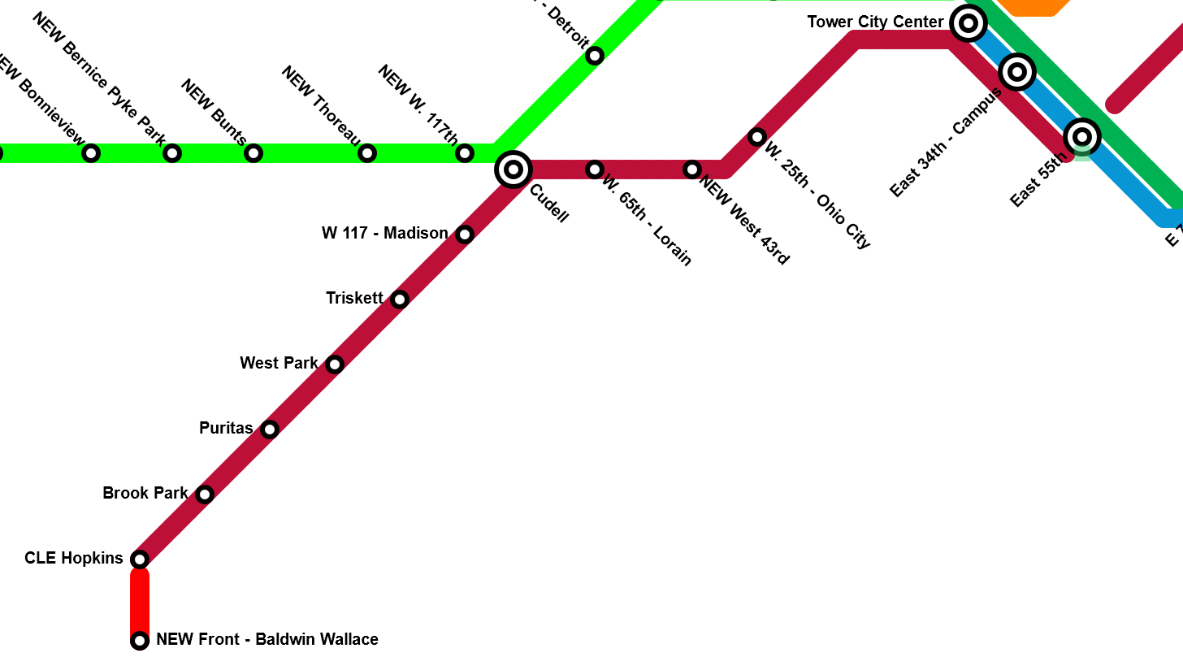 First, expanding Cleveland's flagship rail service and busiest transit line. On the west side, I propose the addition of two new stations, one infill and one extension. After Hopkins, I suggest extending a fresh stretch of line. 2 miles of this would run on current rail, and then it would convert to a streetcar for another half mile down Front Street to connect to central Berea and BW's campus. This touches on a few themes I'll come back to: First, taking advantage of the incoming rolling stock's ability to seamlessly shift from mixed traffic to street level to grade separated. Second, bringing educational institutions into the rail network. Additionally, I'm proposing an infill station at W.43rd, because the gap between the W. 25th and W. 65th stations is way too huge.
First, expanding Cleveland's flagship rail service and busiest transit line. On the west side, I propose the addition of two new stations, one infill and one extension. After Hopkins, I suggest extending a fresh stretch of line. 2 miles of this would run on current rail, and then it would convert to a streetcar for another half mile down Front Street to connect to central Berea and BW's campus. This touches on a few themes I'll come back to: First, taking advantage of the incoming rolling stock's ability to seamlessly shift from mixed traffic to street level to grade separated. Second, bringing educational institutions into the rail network. Additionally, I'm proposing an infill station at W.43rd, because the gap between the W. 25th and W. 65th stations is way too huge.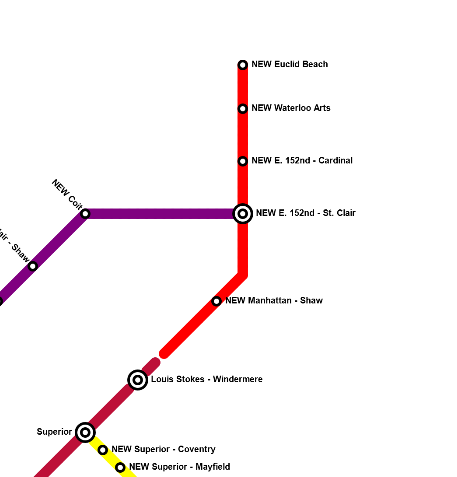 On the east side, I'm suggesting a much more substantial expansion of the Red Line. I suggest that, after Stokes, it continue on that rail spur, with a station at Shaw (close to the high school), then turning up 152nd. Here, it should be new, elevated rail. There are a number of points in this where I suggest the tall but valuable task of fresh elevated rail lines. That would run along 152nd (with stops at St. Clair [Colinwood HS gets service here] and Cardinal) before turning onto Waterloo, hitting the arts district, and then turning back north somewhere between 156th and 164th to run to Euclid Beach Park. Collinwood, especially North Collinwood, is very disconnected from the city in terms of transit. There's also very little transit service to the lake. This seeks to remedy all that.
On the east side, I'm suggesting a much more substantial expansion of the Red Line. I suggest that, after Stokes, it continue on that rail spur, with a station at Shaw (close to the high school), then turning up 152nd. Here, it should be new, elevated rail. There are a number of points in this where I suggest the tall but valuable task of fresh elevated rail lines. That would run along 152nd (with stops at St. Clair [Colinwood HS gets service here] and Cardinal) before turning onto Waterloo, hitting the arts district, and then turning back north somewhere between 156th and 164th to run to Euclid Beach Park. Collinwood, especially North Collinwood, is very disconnected from the city in terms of transit. There's also very little transit service to the lake. This seeks to remedy all that.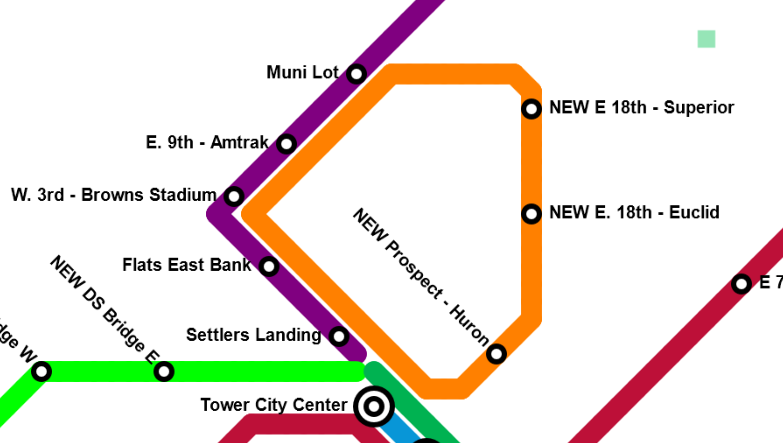 When the Waterfront line was originally built in the 90's, it was supposed to turn back south through downtown and form a loop. I say, let's finish that loop. I suggest going down E. 18th. I know that might seem a little odd, but it neatly hits Playhouse Square and CSU. Then, turn it onto Prospect to hit the Q and the Progressive before taking it down into Tower City. The whole additional stretch here is elevated. I'm also separating this out more cleanly from the Blue/Green Lines and making it definitively its own thing. I see it operating two ways: One, with a regular, dedicated looping service. Second, taking advantage of interoperability to allow any other line hitting TC to add a loop through downtown on some service. For example, if the Red Line were running 6 times an hour, one or two of those would additionally run the whole downtown loop. You could get very, very high frequency on this loop by combining these two options, or even with just the second.
When the Waterfront line was originally built in the 90's, it was supposed to turn back south through downtown and form a loop. I say, let's finish that loop. I suggest going down E. 18th. I know that might seem a little odd, but it neatly hits Playhouse Square and CSU. Then, turn it onto Prospect to hit the Q and the Progressive before taking it down into Tower City. The whole additional stretch here is elevated. I'm also separating this out more cleanly from the Blue/Green Lines and making it definitively its own thing. I see it operating two ways: One, with a regular, dedicated looping service. Second, taking advantage of interoperability to allow any other line hitting TC to add a loop through downtown on some service. For example, if the Red Line were running 6 times an hour, one or two of those would additionally run the whole downtown loop. You could get very, very high frequency on this loop by combining these two options, or even with just the second.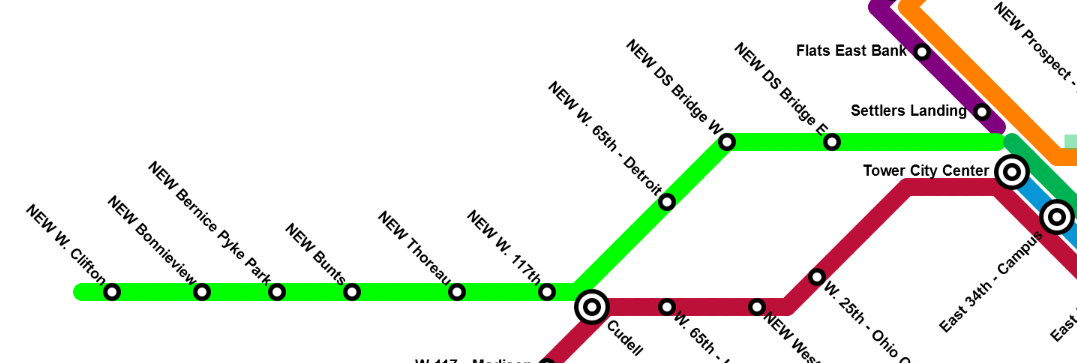 It's time to make the Detroit Superior Bridge a subway bridge again. Currently, there are two inaccessible stations at either end of the bridge, and then a tunnel that runs along Detroit to W. 28th. I suggest connecting Tower City's lines underground to the bridge, renovating both bridge terminal stations, and, where the tunnel ends, bringing the line up out of the ground onto new elevated construction. There, it runs above Detroit until connecting into Cudell. Here we hit another theme of my proposal: lines connect far outside of Tower City. This provides a great deal of resiliency to the network as a whole. There's also an alternative option where, instead of going above Detroit, the line turns north immediately after the bridge to hit Whiskey Island and Edgewater, then connecting into Cudell. This would use current rail ROW that could either be taken from NS or built above with elevated rail. Either way, after Cudell, this continues on or over that rail through Lakewood, stopping near the edge with Rocky River. It could feasibly go over the river as well, but I'm only extending to inner ring suburbs here. Lakewood service seems absolutely mandatory to me given its density and linearity.
It's time to make the Detroit Superior Bridge a subway bridge again. Currently, there are two inaccessible stations at either end of the bridge, and then a tunnel that runs along Detroit to W. 28th. I suggest connecting Tower City's lines underground to the bridge, renovating both bridge terminal stations, and, where the tunnel ends, bringing the line up out of the ground onto new elevated construction. There, it runs above Detroit until connecting into Cudell. Here we hit another theme of my proposal: lines connect far outside of Tower City. This provides a great deal of resiliency to the network as a whole. There's also an alternative option where, instead of going above Detroit, the line turns north immediately after the bridge to hit Whiskey Island and Edgewater, then connecting into Cudell. This would use current rail ROW that could either be taken from NS or built above with elevated rail. Either way, after Cudell, this continues on or over that rail through Lakewood, stopping near the edge with Rocky River. It could feasibly go over the river as well, but I'm only extending to inner ring suburbs here. Lakewood service seems absolutely mandatory to me given its density and linearity.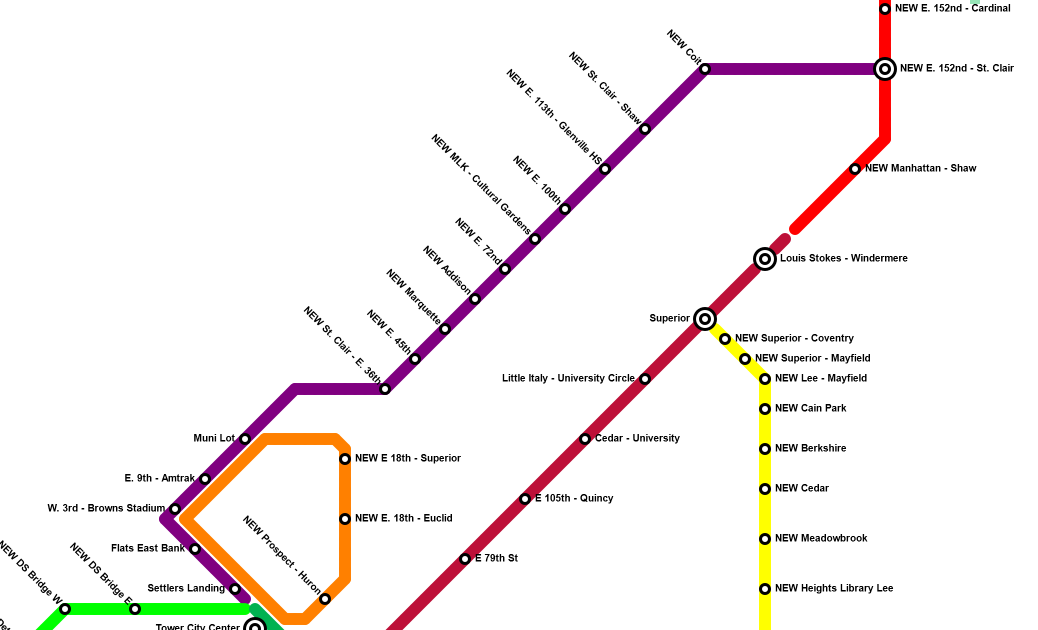 This is the first of two proposed completely new lines. It comes off the Waterfront line/loop as a spur. It carries briefly along established rail ROW moving above St. Clair as elevated rail at E. 36th, by Tyler Village. It then runs entirely over St. Clair, stopping every half mile to a mile, until connecting to the Red Line's new St. Clair - W. 152nd station. Again, I'm focusing here on satellite redundancy, hitting underserved areas, and providing good access for students - this line connects to four separate high schools. Taking advantage of interoperability, these trains could continue north onto the Red Line's lakeward extension. This line also serves Asiatown, which is due for rail connection.
This is the first of two proposed completely new lines. It comes off the Waterfront line/loop as a spur. It carries briefly along established rail ROW moving above St. Clair as elevated rail at E. 36th, by Tyler Village. It then runs entirely over St. Clair, stopping every half mile to a mile, until connecting to the Red Line's new St. Clair - W. 152nd station. Again, I'm focusing here on satellite redundancy, hitting underserved areas, and providing good access for students - this line connects to four separate high schools. Taking advantage of interoperability, these trains could continue north onto the Red Line's lakeward extension. This line also serves Asiatown, which is due for rail connection.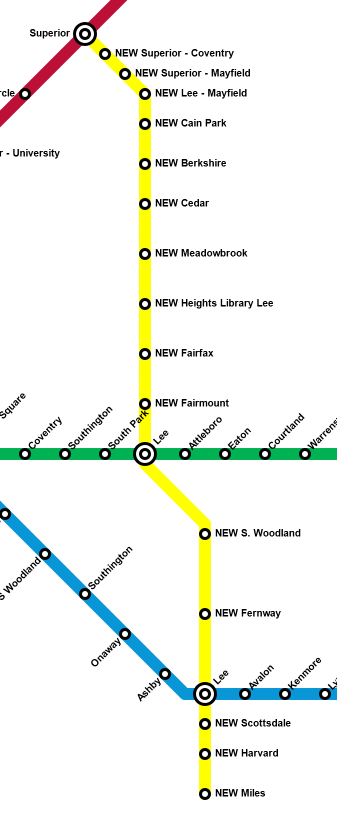 After Lakewood, Cleveland Heights is the most densely populated city in the state. It's a traditional street car suburb squeezed between RTA's current rail lines. I propose here a mostly street-running streetcar that would link Red, Green, and Blue lines. It hits CH's main cultural institutions, provides further connections for East Cleveland, and brings rail into underconnected Southeast Cleveland. Where possible, I'd be happy to see this as elevated rail, but I think this is one of the few areas where a streetcar is appropriate (even if it's in mixed traffic for most of its time on Lee). This hits CH and SH high schools. It unlocks a huge variety of interoperability options: direct connections to downtown, a variety of looping east side services, massive system redundancy, etc.
After Lakewood, Cleveland Heights is the most densely populated city in the state. It's a traditional street car suburb squeezed between RTA's current rail lines. I propose here a mostly street-running streetcar that would link Red, Green, and Blue lines. It hits CH's main cultural institutions, provides further connections for East Cleveland, and brings rail into underconnected Southeast Cleveland. Where possible, I'd be happy to see this as elevated rail, but I think this is one of the few areas where a streetcar is appropriate (even if it's in mixed traffic for most of its time on Lee). This hits CH and SH high schools. It unlocks a huge variety of interoperability options: direct connections to downtown, a variety of looping east side services, massive system redundancy, etc.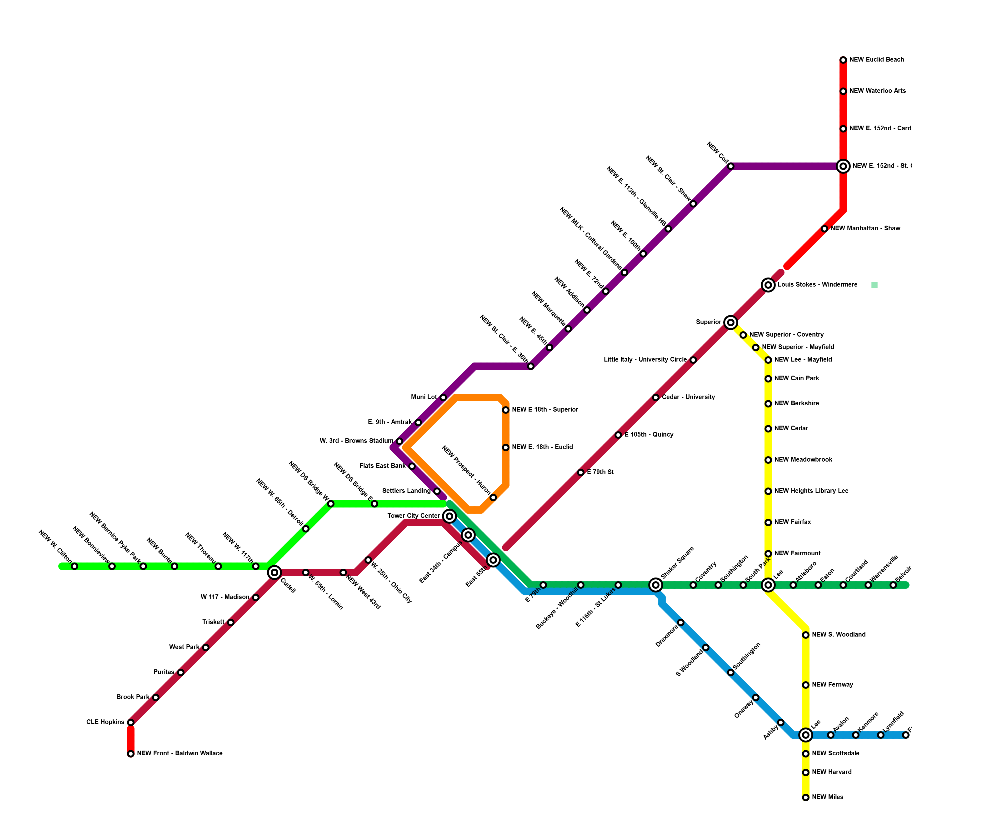





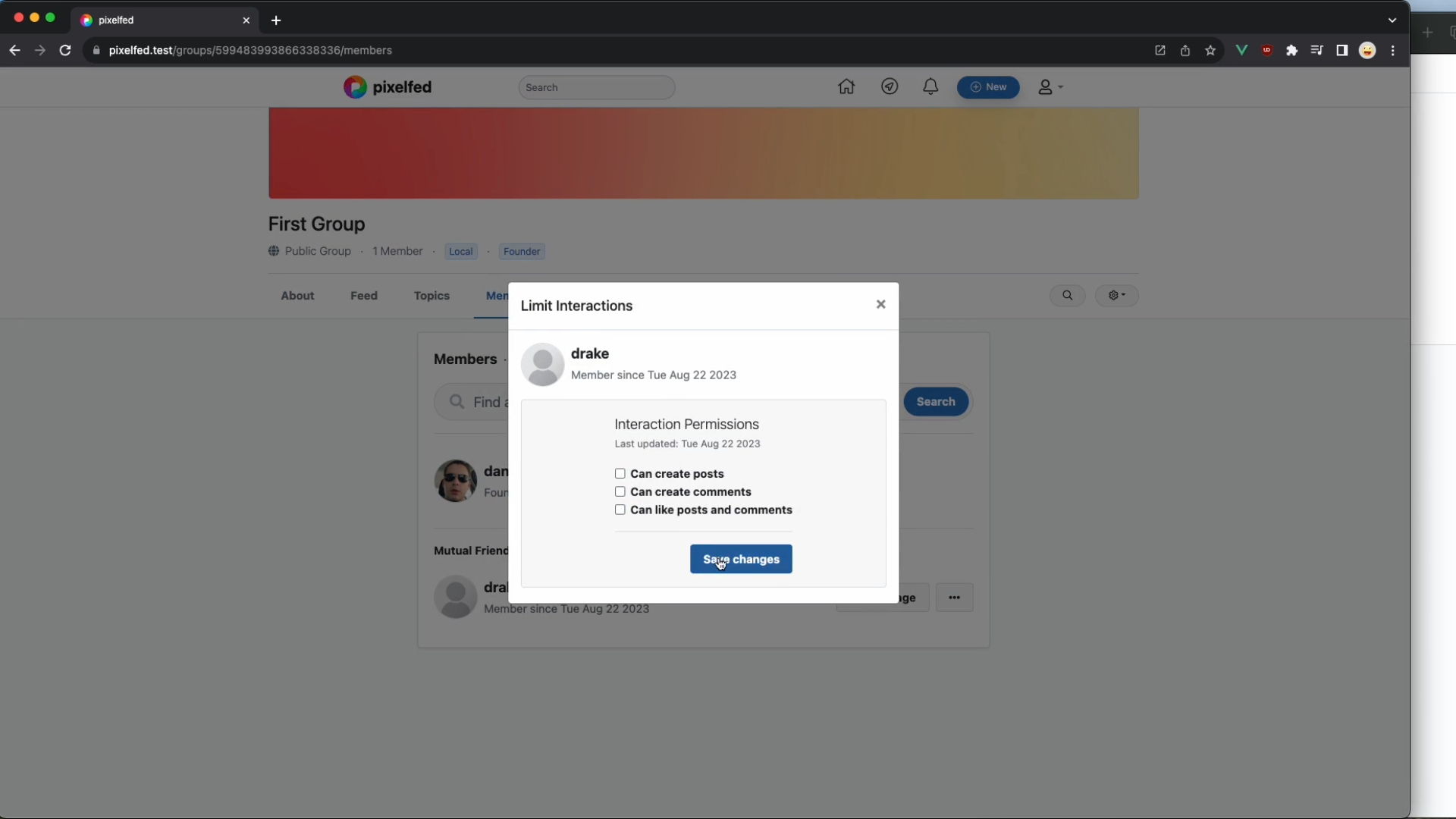
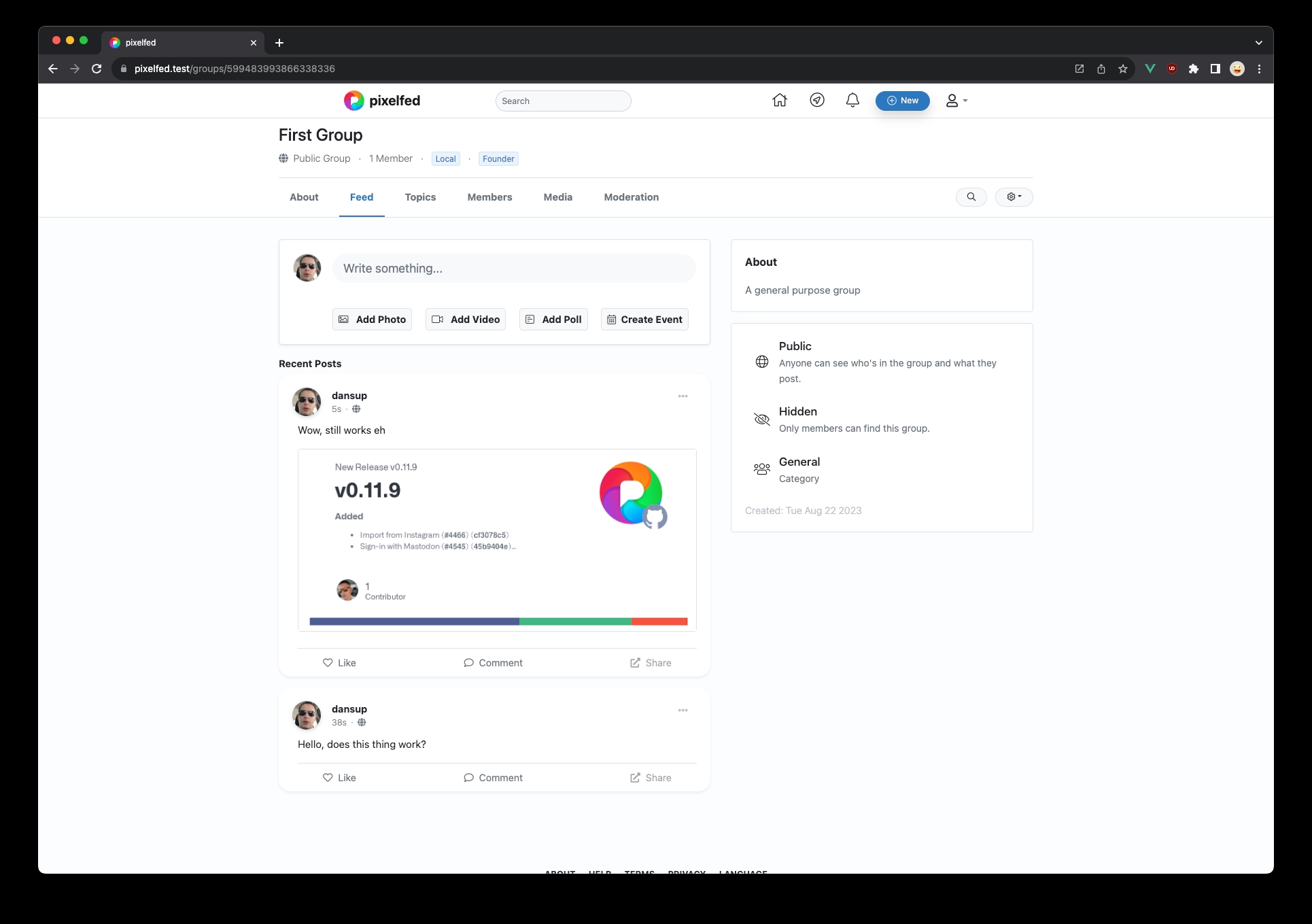
/r/socialism rhetoric these days is mostly ML friendly. It's definitely the dominant strain. They just have a lot of incoming liberals due to being on Reddit, baby socialists with varying degrees of brainworms, and an ultra leftist/Maoist minority.